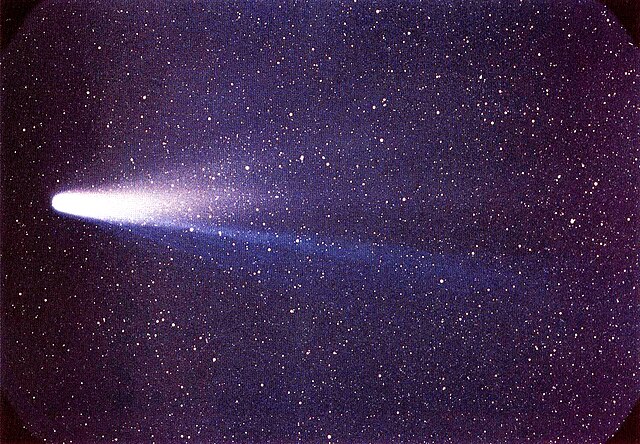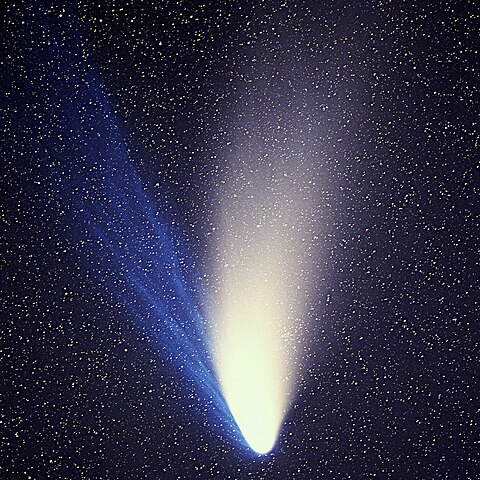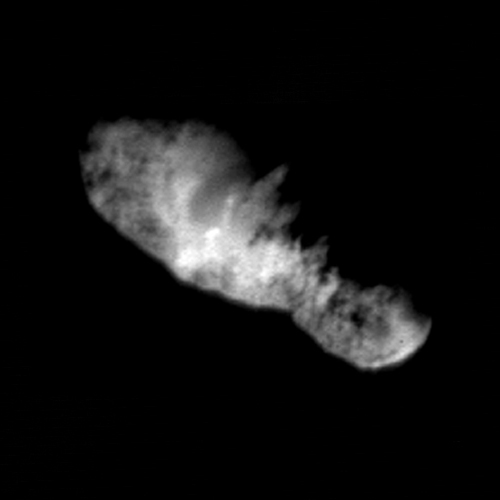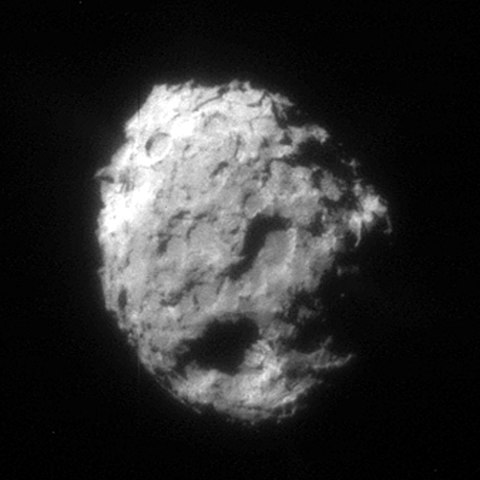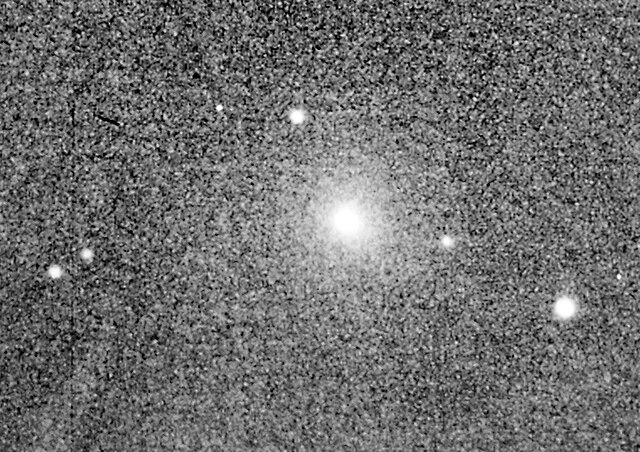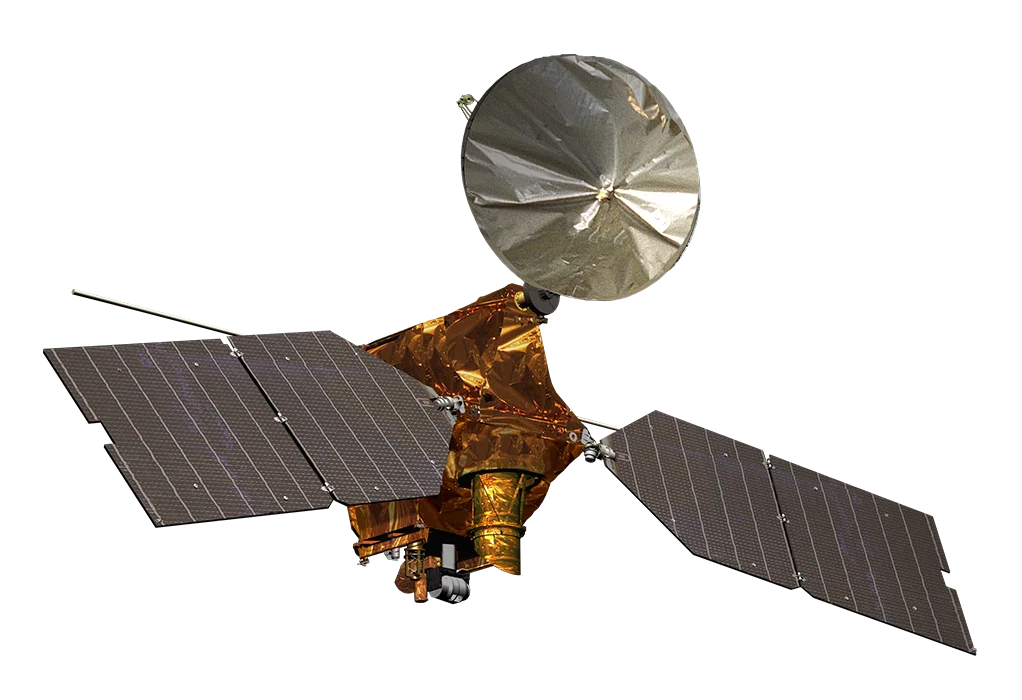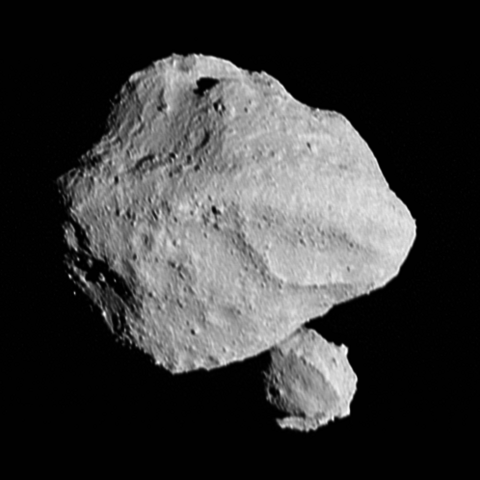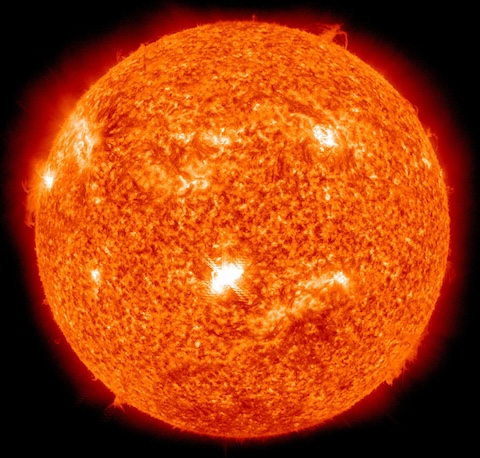1 day / second
0.5 AU
103P/Hartley 2
Comet
A small, peanut-shaped comet discovered in 1986 that rotates rapidly and shows unusual activity with dramatic jets of carbon dioxide gas erupting from its surface.
Key Facts
learn more | Wikipedia |
mass | 3.0000e+11 kg |
radius | 0.57 km |
hill radius | 58.757 km |
semi-major axis | 3.475 AU |
eccentricity | 0.694 |
inclination | 13.61º |
longitude of the ascending node | 219.751º |
argument of periapsis | 181.301º |
orbital period | 6.478 years |
discovery date | March 15, 1986 |
discovered by | Malcolm Hartley |
name origins | Named after its discoverer Malcolm Hartley |
dimensions | 1.6 kilometers in diameter |
material composition | Ice and dust (typical cometary material) |
Spacecraft Visits
Deep Impact
Flyby
Launched in 2005, visited in 2010
Deep Impact performed a close flyby of comet Hartley 2 on November 4, 2010, approaching within 700 kilometers and capturing detailed images of the comet's unusual peanut-shaped nucleus.


